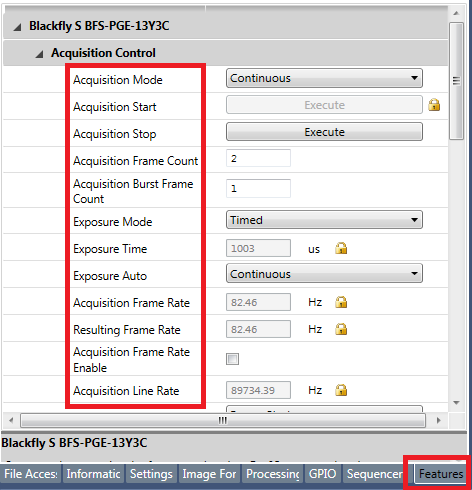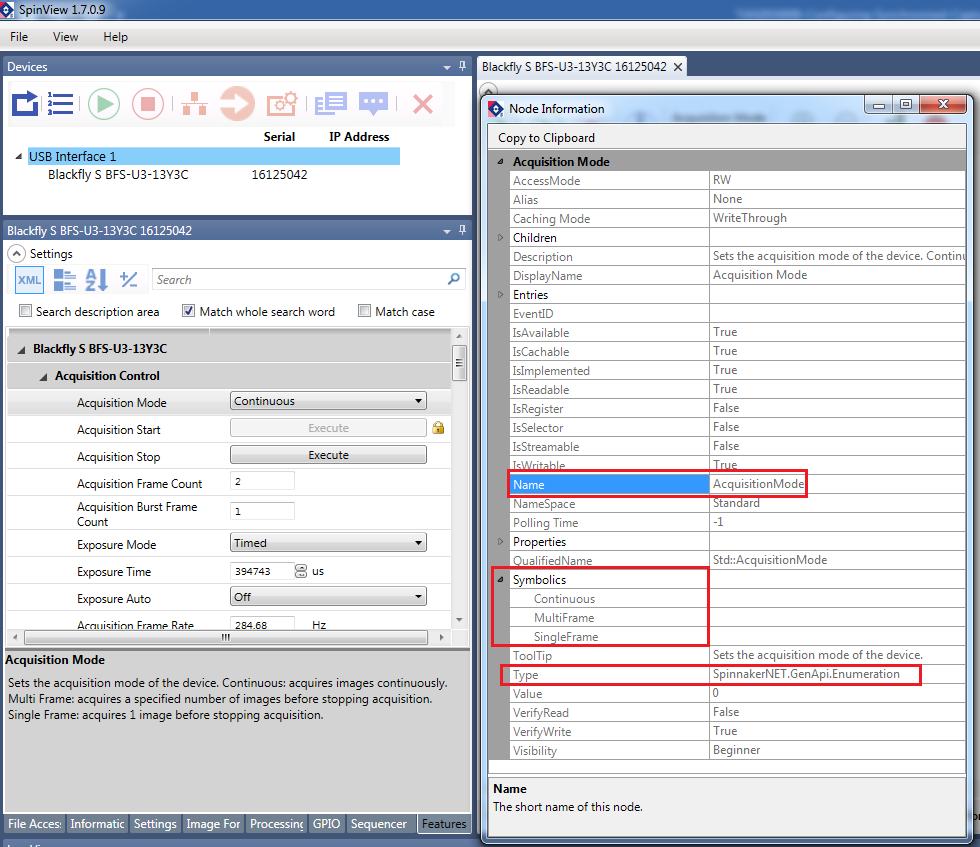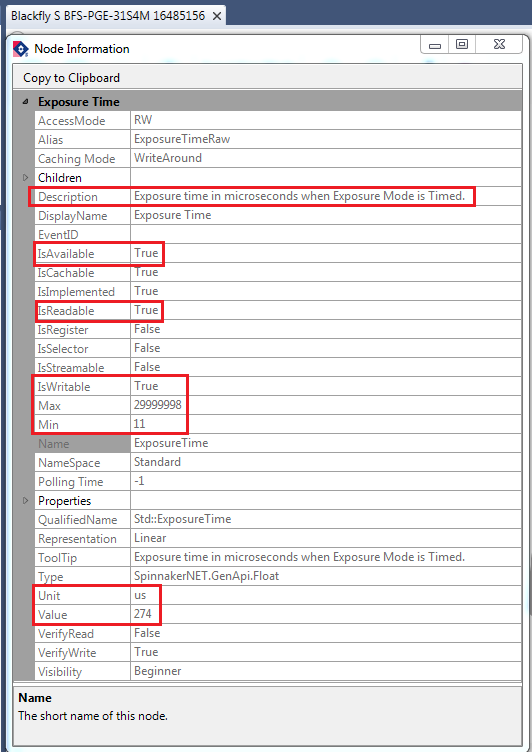Spinnaker Nodes
Download PDF - Spinnaker-Nodes
Preparing for use
Before you use your camera, we recommend that you are aware of the following resources available from our downloads page:
- Getting Started Manual for the camera—provides information on installing components and software needed to run the camera.
- Technical Reference for the camera—provides information on the camera’s specifications, features and operations, as well as imaging and acquisition controls.
- Firmware updates—ensure you are using the most up-to-date firmware for the camera to take advantage of improvements and fixes.
- Tech Insights—Subscribe to our monthly email updates containing information on new knowledge base articles, new firmware and software releases, and Product Change Notices (PCN).
What is the Spinnaker API?
Spinnaker API is built around the GenICam standard, which offers a generic programming interface for various cameras and interfaces. Spinnaker is an extension of GenAPI. Spinnaker provides quick and easy access to your camera.
Spinnaker API includes two major components:
Image Acquisition—This is the acquisition engine that is responsible for setting up image buffers and image grabbing.
Camera Configuration—This is the configuration engine that is responsible for controlling your camera. This component consists of the QuickSpin API, which is a wrapper that makes GenAPI easy to use.
Nodes
Every GenICam compliant camera has an XML description file. The XML describes camera registers, their interdependencies, and all other information needed to access high-level features by means of low level register read and write operations. These features include Gain, Exposure Time, Image Format, and others. The elements of a camera description file are represented as software objects called nodes. A nodes map is a list of nodes created dynamically at run time.

All the features and functionality described on the Features tab in SpinView represent nodes.
Node types
The majority of nodes fall within 7 types. They are:
| Type | Description | Example |
|---|---|---|
| Enumeration | Any feature that has a selection of text entries available | Auto Gain or Acquisition Mode |
| EnumEntry | The individual entry within an enumeration feature | Continuous, Once, Off or Continuous, Multi frame, Single frame |
| Command | Any feature that requires a command to execute, normally denoted by an execute button in SpinView | Timestamp Latch or Trigger Software |
| Float | Any feature that has a number entry that may include a decimal point | Gain or Exposure Time |
| Boolean | Any feature that acts as an on or off switch for that feature normally denoted by a checkbox in SpinView | ReverseX or Acquisition Frame Rate Enable |
| Integer | Any feature that has a number entry without a decimal point | Width or Height |
| String | Any feature that has a user-defined or static text entry | Vendor Name (static) or Device User ID (user-defined) |
Methods to determine node types and names
There are several ways to determine what type of node a feature is and what the exact node name within the API. Reviewing the Spinnaker API documentation that comes included with the Spinnaker SDK is one method, as it contains a complete list of the nodes currently available for all Spinnaker compatible cameras. However, it may include some nodes/entries that are not supported by your particular camera.
Another method would be to use SpinView. It lists only the nodes that the camera supports, and provides a “node information window” which contains detailed information on each individual node.
To access the node information window:
- Open SpinView and select your camera.
- On the Features tab, double-click on any node. In the example below, the Acquisition Mode has been selected.

Name shows the actual name of the node used within the Spinnaker API. Type shows the node type. As this is an enumeration type, the Symbolics section shows the EnumEntry names for this node.
The Node Information window contains additional information which can be helpful when accessing or modifying node values.

Description: provides the details of the purpose of the node.
IsAvailable, IsReadable, IsWriteable: can be used to check whether a node is available, or readable, or writeable before accessing it.
Min/Max: these define the minimum and maximum values for numerical based nodes, either integer or float.
Unit: displays the real-world units for the feature.
Value: displays the current value.
Accessing nodes in the API
Spinnaker supports multiple programming languages. Regardless of the programming language used, the same node setup applies. The code snippets below show how to access the different node types within three of the supported programming languages: C++, C#, C, and Python.
Note: The following code snippets do not implement availability, readability, or writability checks. Review the example code included in the Spinnaker SDK for details on how to do so.
Enumeration and EnumEntry nodes
The following code snippets show how to access Enumeration and EnumEntry nodes.
| Spinnaker C++ API |
// Enumeration node //EnumEntry node (always associated with an Enumeration node) //Turn off Auto Gain |
| Spinnaker C# API |
// Enumeration node //EnumEntry node (always associated with an Enumeration node) //Turn off Auto Gain |
| Spinnaker C API |
spinNodeHandle hGainAuto = NULL; // Retrieve node (Enumeration node in this case) //EnumEntry node (always associated with an Enumeration node) //Turn off Auto Gain |
| Spinnaker Python API |
# Retrieve node (Enumeration node in this case) node_gainauto_mode = PySpin.CEnumerationPtr(nodemap.GetNode("GainAuto")) # EnumEntry node (always associated with an Enumeration node) # Turn off Auto Gain |
Command nodes
The following code snippets show how to access Command nodes.
| Spinnaker C++ API |
// Command node //Execute command |
| Spinnaker C# API |
// Command node //Execute command |
| Spinnaker C API |
// Retrieve node (command) //Execute command |
| Spinnaker Python API |
# Retrieve node (command) # Execute command |
Float nodes
The following code snippets show how to access Float nodes.
| Spinnaker C++ API |
// Float node //Set gain to 0.6 dB |
| Spinnaker C# API |
// Float node //Set gain to 0.6 dB |
| Spinnaker C API |
spinNodeHandle hGain = NULL; // Retrieve node (float) //Set gain to 0.6 dB |
| Spinnaker Python API |
# Retrieve node (float) node_iGain_float = PySpin.CFloatPtr(nodemap.GetNode("Gain")) # Set gain to 0.6 dB |
Boolean nodes
The following code snippets show how to access Boolean nodes.
| Spinnaker C++ API |
// Boolean node //Set value to true (mirror the image) |
| Spinnaker C# API |
// Boolean node //Set value to true (mirror the image) |
| Spinnaker C API |
spinNodeHandle hReverseX = NULL; // Retrieve node (boolean) //Set value to true (mirror the image) |
| Spinnaker Python API |
# Retrieve node (boolean) node_iReverseX_bool = PySpin.CBooleanPtr(nodemap.GetNode("ReverseX")) # Set value to true (mirror the image) |
Integer nodes
The following code snippets show how to access Integer nodes.
| Spinnaker C++ API |
// Integer node //Set width of 640 pixels |
| Spinnaker C# API |
// Integer node //Set width of 640 pixels |
| Spinnaker C API |
// Retrieve node (integer) //Set width of 640 pixels |
| Spinnaker Python API |
# Retrieve node (integer) # Set width of 640 pixels |
String nodes
The following code snippets show how to access String nodes.
| Spinnaker C++ API |
// String node //Display vendor name |
| Spinnaker C# API |
// String node //Display vendor name |
| Spinnaker C API |
spinNodeHandle hVendorName = NULL; // Retrieve node (string) // Display vendor name |
| Spinnaker Python API |
# Retrieve node (string) node_iVendorName_str = PySpin.CStringPtr(nodemap.GetNode("DeviceVendorName")) # Display vendor name |
Troubleshooting
Unsure of how certain features or nodes work, or how to interact with them
The example code that comes with the Spinnaker SDK covers a large variety of nodes and their functionality.
Unable to make changes or to access a node
You may be trying to access a feature that is currently locked. For details on feature locking, see Technical Application Note Feature Locking in the Spinnaker API.